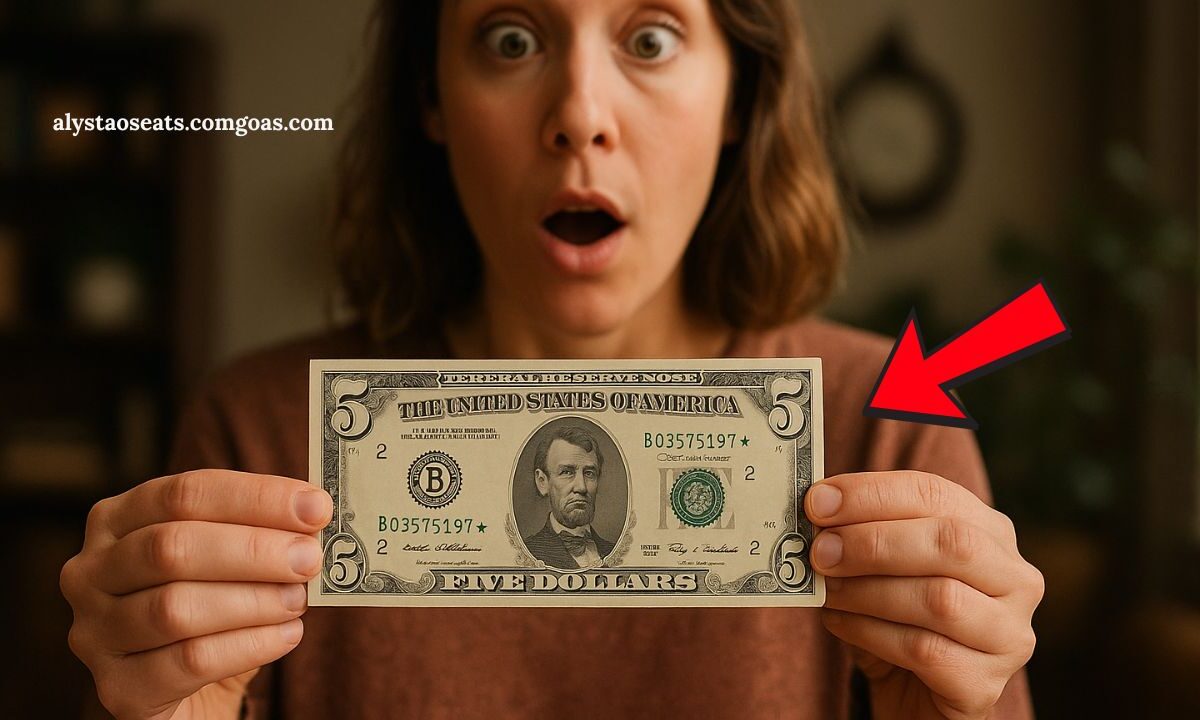If you’ve ever categorized an old $5 bill as just another piece of spare change, think again. In 2025, collectors are on high alert for the elusive 1986 $5 star notes—ordinary-looking bills marked with a tiny ★ in the serial number. These replacement notes are rare, valuable, and could fetch thousands, turning a small find into a major payday.
What Makes 1986 $5 Star Notes So Valuable?
Star notes are printed to replace misprints during production. Instead of reissuing a damaged serial, the U.S. Bureau of Engraving and Printing adds a ★ at the end (or beginning) of the serial number to identify them.
For the 1986 series, these are in small supply, and now that collectors are hunting them, demand—and prices—have soared.
Identification Guide – Spotting a 1986 $5 Star Note
| Feature | What to Look For |
|---|---|
| Series Year | Should read Series 1986 near Lincoln’s portrait |
| Star Symbol | A ★ appears at the serial number’s start or end |
| Serial Number Pattern | Fancy (e.g., ladders, repeaters, radars) or very low numbers add huge value |
| Federal Reserve District | Some districts (e.g., Minneapolis, Richmond) issued fewer notes |
| Condition | Crisp, uncirculated notes are significantly more valuable than circulated examples |
1986 $5 Star Note Values in 2025
Values vary based on condition, serial, and rarity:
| Note Type | Condition | Estimated Value |
|---|---|---|
| Common star note (circulated) | Fine / Very Fine | $100 – $300 |
| Standard star note (uncirculated) | Choice / Gem UNC | $800 – $2,500 |
| Low or fancy serial (gem UNC) | Gem UNC | $3,000 – $5,500+ |
| Rare district issue (uncirculated) | UNC | $2,000 – $4,000 |
| Ultra rare ladder or radar serial numbers | Gem UNC | $4,000 – $9,000+ |
Even circulated star notes are prized collectibles, and crisp low-serial or patterned examples can reach $7,000+ in 2025.
Are These Star Notes Still in Circulation?
Yes! Many 1986 star notes remain in everyday use—hidden in wallets, inherited collections, or old savings. Most casual holders miss the tiny star, which makes these notes a potential treasure hunt trigger for anyone paying attention.
What to Do If You Find One
- Handle Carefully – Avoid folds or creases
- Use a Protective Sleeve – Acid-free plastic preserves condition
- Photograph the Bill – Capture front/back in good lighting
- Check Condition & Serial – Look for uncirculated quality and unique serials
- Get Appraised – Contact a certified currency dealer
- Professional Grading – Services like PMG or PCGS Currency increase resale value substantially
Where to Get It Appraised or Sold
- Certified Currency Dealers – Look for ANA or PNG membership
- Major Auction Houses – Heritage Auctions, Stack’s Bowers
- Online Platforms – MA-Shops, eBay (only vetted sellers)
- Forums and Meetups – r/papermoney, Paper Money Forum
- Coin & Currency Shows – In-person appraisals offer instant feedback
That seemingly ordinary $5 bill from 1986 could become a gold mine if it has the elusive star symbol (★) in the serial number. These star notes—especially in uncirculated condition or with fancy serials—are commanding thousands in 2025.
Regular cash, inherited stashes, or small-town bank batches might hold your ticket to a collector’s jackpot. So, when you come across an old fiver, check for that star—it might just be worth a fortune.
FAQs
What is a star note?
A star note is a replacement bill printed during production to replace damaged originals, identified by a ★ in the serial number.
How much are 1986 $5 star notes worth today?
Value ranges widely: common circulated notes go for $100–$300, uncirculated ones fetch $800–$2,500, and rare patterned or low serials can reach $4,000–$9,000+.
Should I grade my star note?
Yes—professional grading (PMG or PCGS) provides authentication, protection, and significantly enhances a note’s resale value and trustworthiness.

